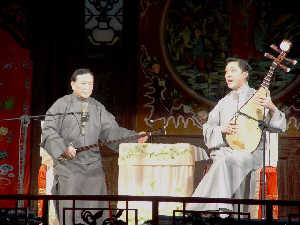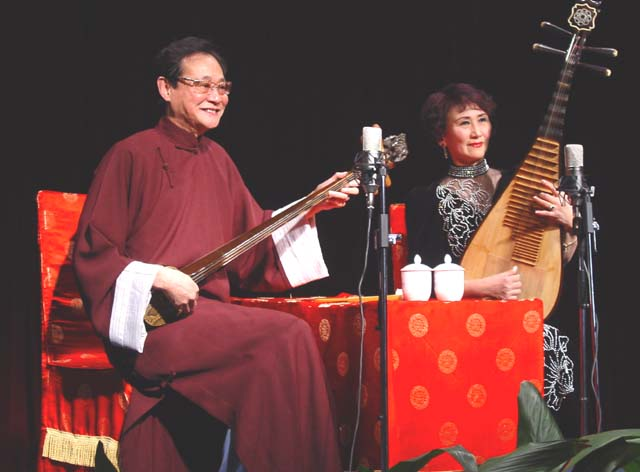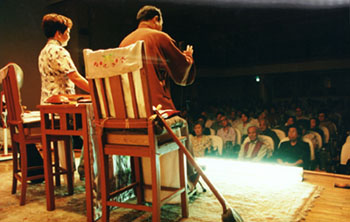 Suzhou pingtan is a general term denoting Suzhou pinghua and tanci, namely, storytelling and ballad singing in the Suzhou dialect. Flourishing in Suzhou, it also enjoys great popularity in Jiangsu and Zhejiang provinces as well as in Shanghai, the biggest metropolis in East China.
Suzhou pingtan is a general term denoting Suzhou pinghua and tanci, namely, storytelling and ballad singing in the Suzhou dialect. Flourishing in Suzhou, it also enjoys great popularity in Jiangsu and Zhejiang provinces as well as in Shanghai, the biggest metropolis in East China.
The art has a long history. Pinghua developed from the storytelling art of the Tang (and Song dynasties, and performers only spoke instead of sang during the performance. Pingtan evolved from bianwen that propagandized Buddhist teachings in the Tang Dynasty.
In the late years of the Ming Dynasty and the early years of the Qing Dynasty, actors and actresses began to perform in Suzhou dialect, hence emerged Suzhou pingtan. Suzhou pingtan reached its peak in the reign of Emperor Qianlong (1739-1796) in the Qing Dynasty. In the subsequent more than 200 years, the art form saw much improvement. It is still popular today.
 Suzhou pingtan is performed solo, in duet, or as a trio, involving singing and storytelling. The small three-stringed plucked instrument and pipa are used as accompaniment. The ban, or wooden clappers, produces various styles of tone and melody.
Suzhou pingtan is performed solo, in duet, or as a trio, involving singing and storytelling. The small three-stringed plucked instrument and pipa are used as accompaniment. The ban, or wooden clappers, produces various styles of tone and melody.
Pingtan has absorbed popular folk tunes. For instance, shu tone came from other quyi forms and is the basis of other styles. Due to different performance styles, shu tone is divided into the Chen Yuquan, Ma Rufei and Yu Xiushan schools.
In the nearly century-long development, new styles were formed that inherited the legacy of the three schools. Liu Tianyun and Yang Zhenxiong inherited the Chen school, while Xia Hesheng and Zhu Huizhen inherited the Yu School.
 The Ma school exerted the greatest impact on posterity, with successors who formed schools of their own, such as Xue Xiaoqing diao (tone), Shen Jianan diao, and Qin diao (developed by Zhu Xueqin on the basis of Xue diao). Zhou Yuquan developed into a school on the basis of Ma diao, while Jiang Yuequan developed into a school on the basis of Zhou diao. Due to this development, Suzhou pingtan has a great diversity of styles in singing and storytelling.
The Ma school exerted the greatest impact on posterity, with successors who formed schools of their own, such as Xue Xiaoqing diao (tone), Shen Jianan diao, and Qin diao (developed by Zhu Xueqin on the basis of Xue diao). Zhou Yuquan developed into a school on the basis of Ma diao, while Jiang Yuequan developed into a school on the basis of Zhou diao. Due to this development, Suzhou pingtan has a great diversity of styles in singing and storytelling.
After the founding of the PRC, the government set up the Research Office of Suzhou Pingtan, the Suzhou Pingtan School, and other institutes to protect and carry forward this traditional quyi art. After the 1980s, performers of Suzhou pingtan staged performances and carried out exchanges in Japan, Singapore, Italy, the United States and Canada, and so on, where they introduced it to overseas communities with great success.
